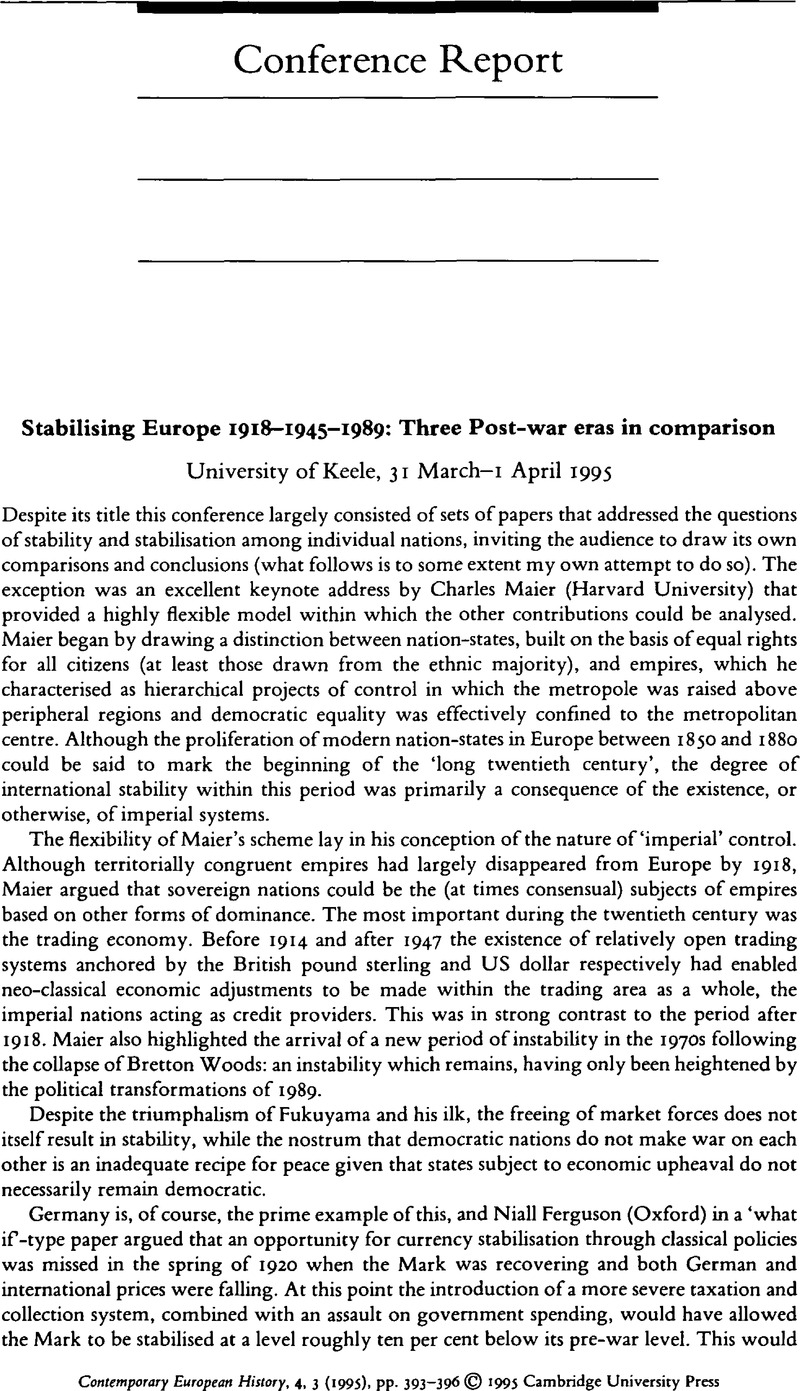No CrossRef data available.
Article contents
Stabilising Europe 1918–1945–1989: Three Post-War Eras in Comparison
Published online by Cambridge University Press: 12 September 2008
Abstract

- Type
- Conference Report
- Information
- Copyright
- Copyright © Cambridge University Press 1995
References
1 There is an interesting parallel with Italy here. When Giolitti returned to power in June 1920 he placed a series of Draconian tax measures on the statute book (mostly directed at business and the middle classes), designed to eliminate the Italian budgetary deficit. Both he and his successors proved unable to find the political will to implement these, however, and it was only when Mussolini gained power following a virtual taxpayers’ revolt in 1922 that the deficit was attacked via an assault on government expenditure, including large cutbacks in the railway administration.
2 The existence of this convention was hotly disputed by Furlong and Paolo Pombeni (Bologna), the latter maintaining it was simply a myth developed by the Left to avoid confronting the fact that Italy had an essentially right-ring electorate. As will be appreciated, in constructing the myth of the state, the existence of such a convention is of less importance than the belief in it.1


